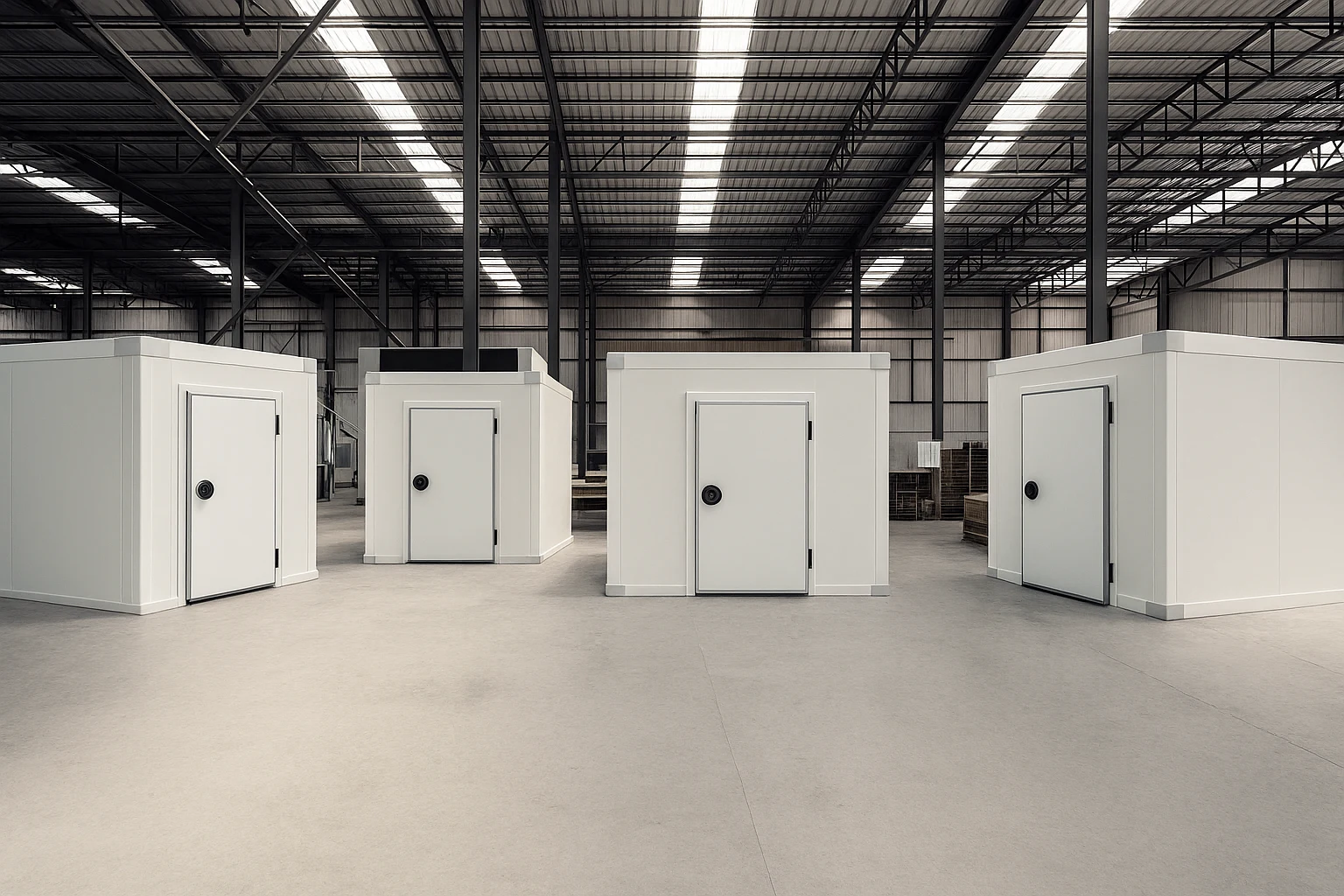Coolroom Panels for Adelaide’s Climate: Why EPS Works Best
Adelaide’s weather swings from hot, dry summers to cool, damp winters, with frequent day-night temperature swings. This guide explains how those conditions affect panel choice, why EPS (expanded polystyrene) is a standout for value and performance, and how to choose the right thickness for long-term, low-energy operation.
By Cool Room Master • Practical, Adelaide-specific recommendations

Adelaide climate & what it means for coolrooms
Adelaide’s summers are typically hot and dry with occasional heatwaves and high solar gains—especially on west-facing walls and roofs. Nights can cool rapidly, creating daily thermal cycling. Winters are mild to cool with periods of moisture and wind. For coolrooms, this adds up to:
- Lower average humidity than tropical cities, but strong sun exposure and hot roof decks matter.
- Thermal cycling stresses joints and fixings—choose panels that handle expansion/contraction gracefully.
- Energy costs are driven by both peak summer loads and 24/7 baseload efficiency.
Why EPS suits Adelaide
1) Reliable performance in hot–dry conditions
EPS offers stable thermal resistance under Adelaide’s day–night swing. It tolerates expansion/contraction well, and its closed-cell structure helps resist incidental moisture.
2) Excellent value per watt saved
Compared to alternatives like PIR/PU, EPS delivers the lowest cost per unit of insulation. For many Adelaide builds, stepping up one thickness in EPS is still cheaper than thinner PIR—yet delivers comparable or better whole-room performance when installed correctly.
3) Availability & serviceability
EPS panel systems, trims and accessories are widely available in SA, with straightforward repair and modification options—ideal for food operators and builders who value uptime and predictable lead times.
4) Sustainability pathways
EPS offcuts can often be compacted and recycled via established EPS programs. Lower embodied cost + recyclability pathways make EPS an attractive, practical choice.
Considering PIR/PU? See our national comparison: EPS vs PIR vs PU.
Recommended thickness by use-case (Adelaide)
These are practical starting points. Final selection depends on room size, product temp, door openings, roof exposure, and plant capacity.
| Use-case | Typical set-point | Suggested EPS thickness | Notes |
|---|---|---|---|
| General coolroom / chiller | +2 to +5 °C | 75–100 mm | 100 mm if west-facing, dark roof, or frequent door openings. |
| Produce/retail back-of-house | +2 to +8 °C | 75–100 mm | Optimise for cleanability and traffic protection at corners. |
| Freezer | −18 to −22 °C | 100–150 mm | Consider 150 mm for sun-exposed roofs; add thermal breaks at slab. |
| Food processing (wash-downs) | 0 to +5 °C | 100 mm | Focus on sealed junctions; use compatible sealants and trims. |
Typical EPS R-values & thermal notes
EPS performance varies by density and manufacturer. The table below shows indicative, whole-panel values to help compare options at a glance. For exact data, refer to the panel datasheet supplied with your order.
| EPS thickness | Indicative Rpanel (m²·K/W) | Where it’s commonly used |
|---|---|---|
| 50 mm | ~1.2–1.4 | Light-duty rooms, conditioned prep areas |
| 75 mm | ~1.9–2.1 | General chillers in shaded locations |
| 100 mm | ~2.6–2.8 | Chillers with frequent access, sun-exposed walls/roof |
| 150 mm | ~3.9–4.2 | Freezers, west-facing or roof-intense heat loads |
Compliance (NCC/BCA) & hygiene
Most food premises in SA require smooth, cleanable, and moisture-resistant surfaces. EPS panels with appropriate steel or aluminium skins, sealed joints, and compliant sealants can form part of a conforming system when specified and installed correctly.
- Confirm your building class, fire pathway and lining requirements with your certifier.
- Use compatible trims, rivets and sealants across walls, ceilings and penetrations.
- Keep manufacturer datasheets and installation records for approvals.
Deep dive: Do EPS Panels Meet Australian Building Codes (NCC/BCA)?
Install & sealing tips for Adelaide projects
Handle the sun
- Prefer light-colour roof/wall skins to limit solar gain.
- Anchor and flash penetrations carefully to allow movement.
- Consider awnings/shading on west-facing entries.
Seal for longevity
- Continuous beads at tongue-and-groove; strike clean.
- Food-grade sealants at corners, coves and kerbs.
- Protect corners with bollards/guards where pallets turn.
Think whole system
- Specify doors with proper thermal break & closers.
- Insulate floors for freezers and high-duty chillers.
- Vent plant rooms; allow service access to coils & drains.
Need supply or install help? Talk to us—we’ll coordinate panels, trims and doors.
FAQ
What thickness suits Adelaide?
For most chillers in metro Adelaide, 75–100 mm EPS is the sweet spot. Choose 100 mm where you have west-facing walls or a hot roof deck, heavy foot traffic, or frequent door openings. Freezers typically benefit from 100–150 mm.
EPS vs PIR in dry heat?
PIR offers higher nominal R-value per millimetre, but EPS is exceptionally cost-effective, robust under thermal cycling and readily available in SA. In practice, stepping up one EPS thickness often equals or beats thinner PIR on whole-room efficiency at a better price point. If space is very tight, a PIR option can be considered—otherwise EPS remains the most economical performer for Adelaide conditions.
See the national comparison: EPS vs PIR vs PU.
Plan your Adelaide coolroom with Cool Room Master
Whether you’re fitting out a new chiller or upgrading an older freezer, our team can size the right thickness, trims and doors for Adelaide’s climate and your budget.
Prefer to chat? Call us and reference “Adelaide Climate Guide” for fast help.
